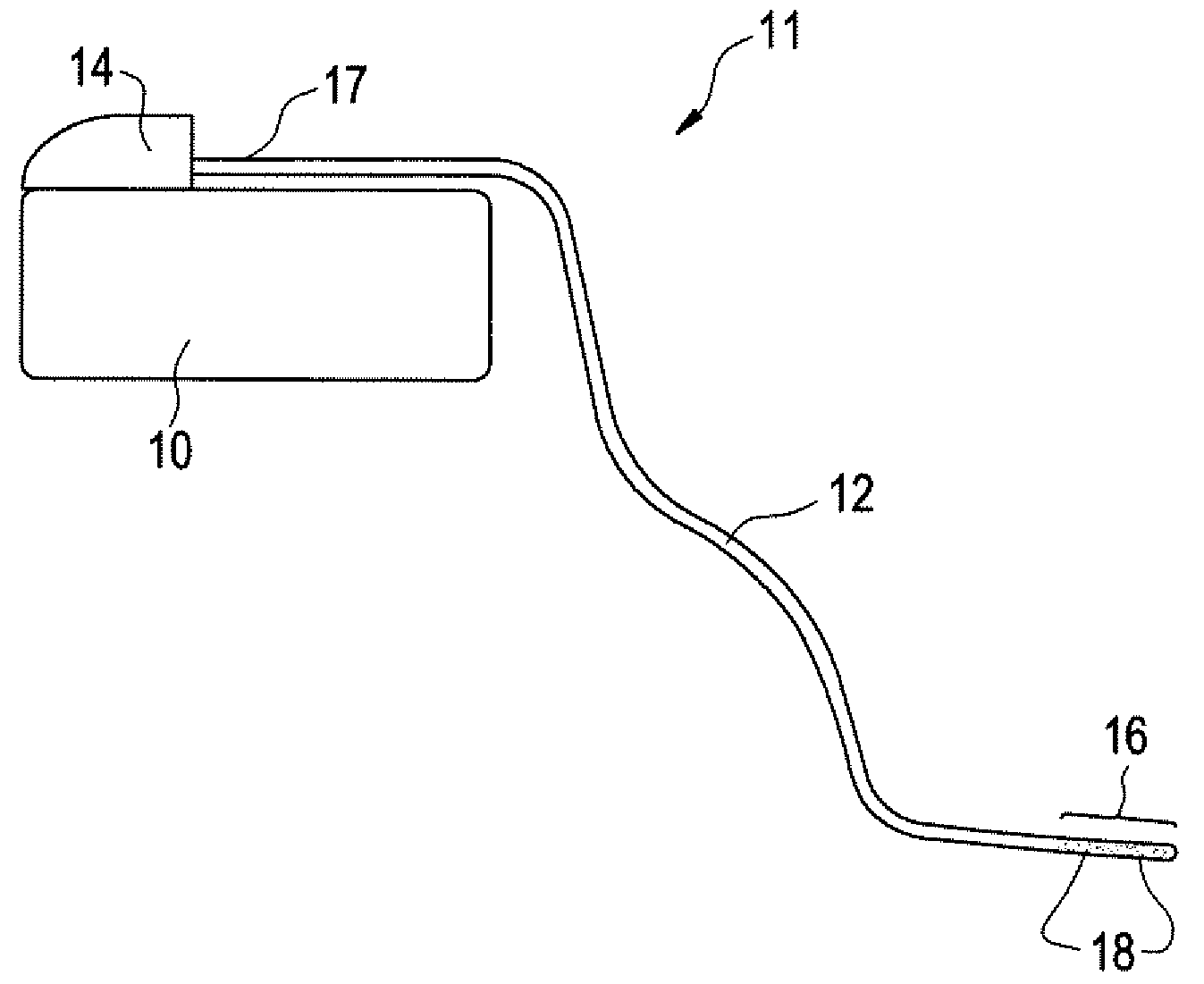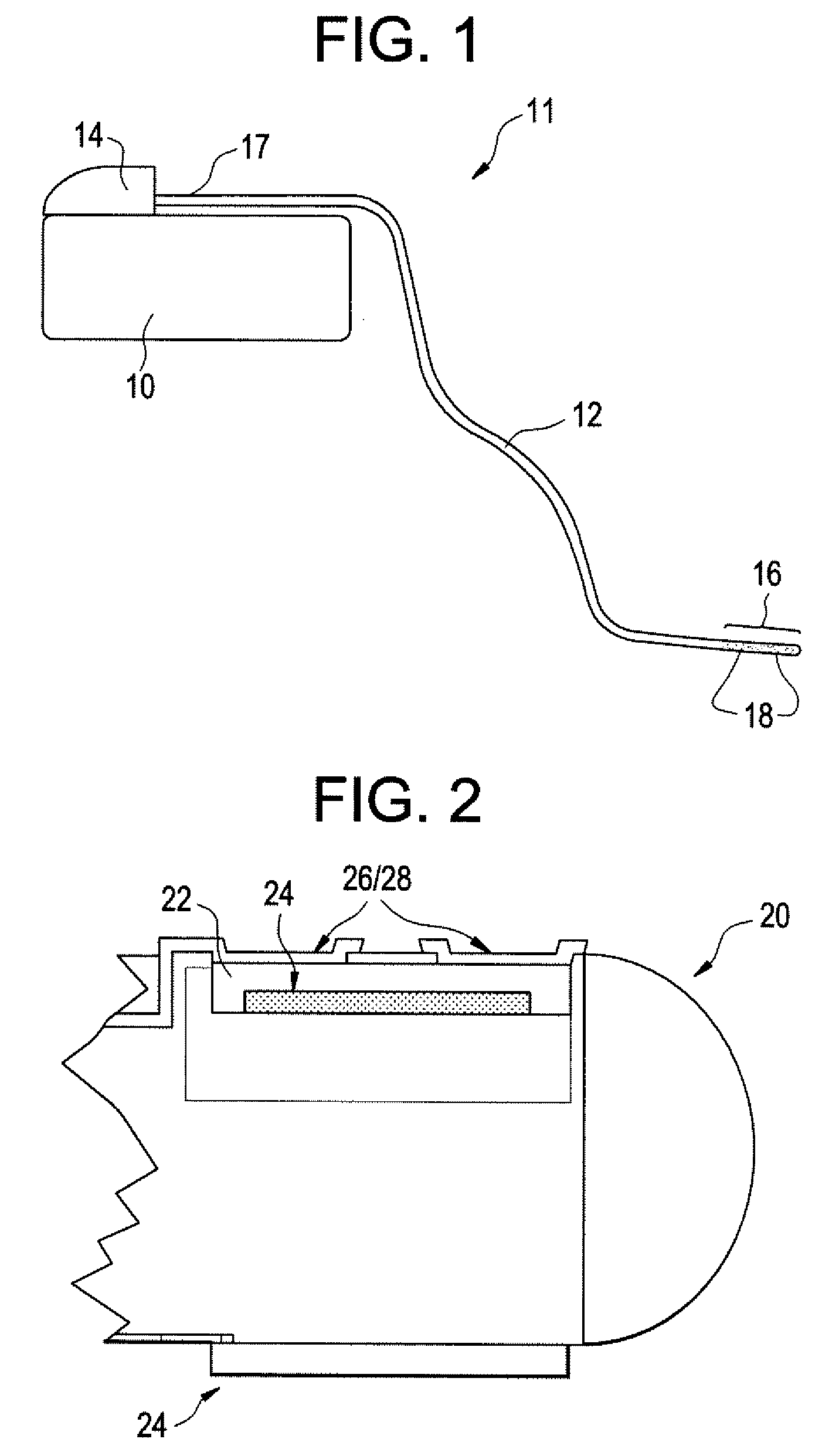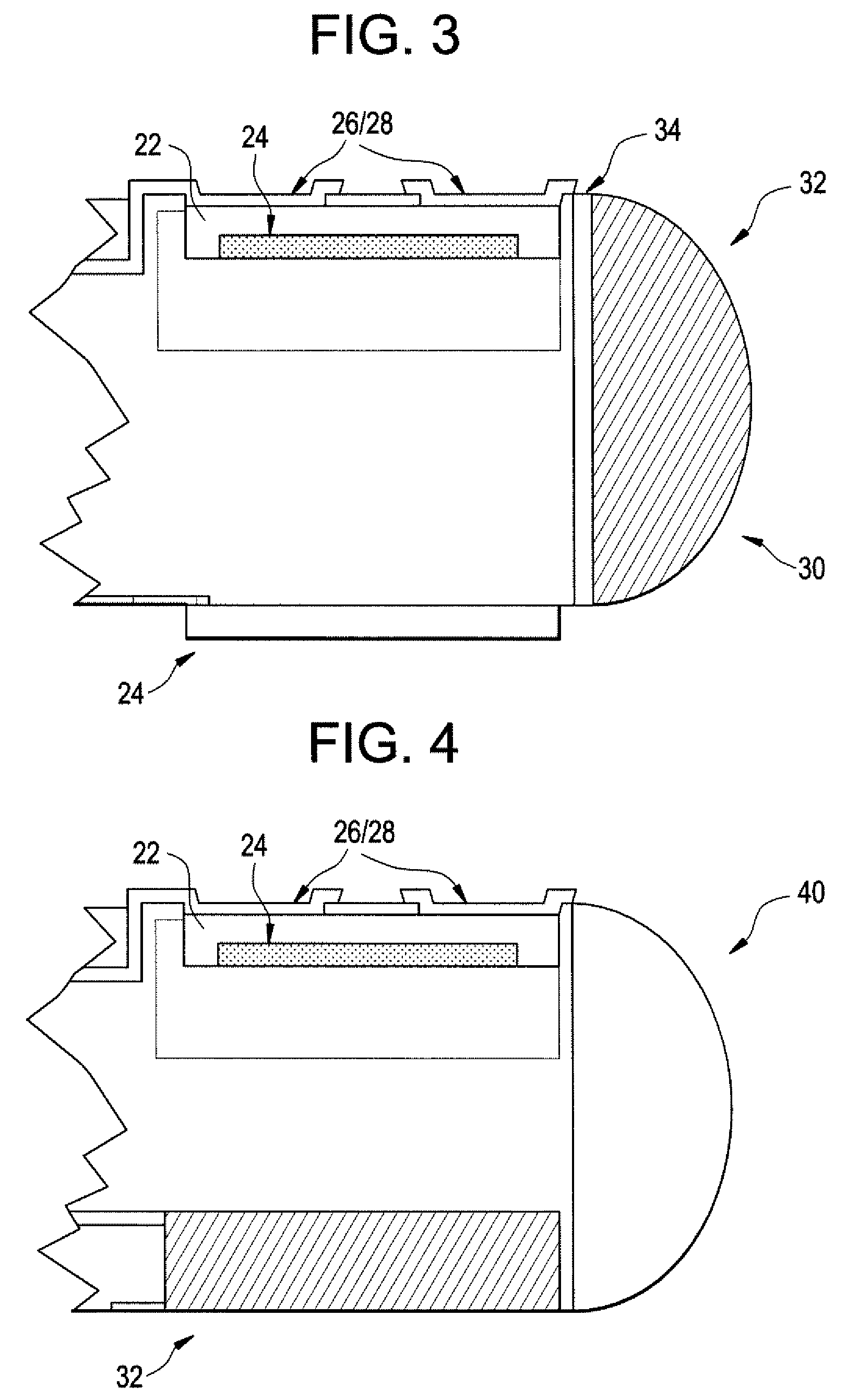Cardiac Biosensor Devices and Methods
a biosensor and cardiac technology, applied in the field of physiological sensing medical devices in vivo for cardiac care, can solve the problems of decreased pumping efficiency, increased stress on the ventricular wall, and remodeling of the ventricular wall, and achieve the effect of improving implantable devices and sensing methods
- Summary
- Abstract
- Description
- Claims
- Application Information
AI Technical Summary
Benefits of technology
Problems solved by technology
Method used
Image
Examples
Embodiment Construction
[0036]Implantable reservoir-based sensor devices have been developed for use in cardiac care applications. Cardiac care, as used herein, refers generally to the monitoring and optional treatment of cardiovascular health, whether related to existing cardiovascular medical conditions or preventing of cardiovascular medical conditions. In particular, cardiac care refers to the diagnosis, treatment, or management of a cardiac disease, disorder, chronic condition, or failure. Thus, the reservoir-based sensor devices embodied herein include sensors or sensing components capable of monitoring or detecting in vivo analytes, biomarkers, or other physical parameters which may be indicative of cardiac disease, disorder, chronic condition, or failure.
[0037]In one aspect, the reservoir based devices provide chemical sensing capability with conventional cardiac implant devices, such as simple pacemakers, cardiac resynchronization therapy (CRT) pacemakers, defibrillators, implantable cardioverter ...
PUM
 Login to View More
Login to View More Abstract
Description
Claims
Application Information
 Login to View More
Login to View More - R&D
- Intellectual Property
- Life Sciences
- Materials
- Tech Scout
- Unparalleled Data Quality
- Higher Quality Content
- 60% Fewer Hallucinations
Browse by: Latest US Patents, China's latest patents, Technical Efficacy Thesaurus, Application Domain, Technology Topic, Popular Technical Reports.
© 2025 PatSnap. All rights reserved.Legal|Privacy policy|Modern Slavery Act Transparency Statement|Sitemap|About US| Contact US: help@patsnap.com



